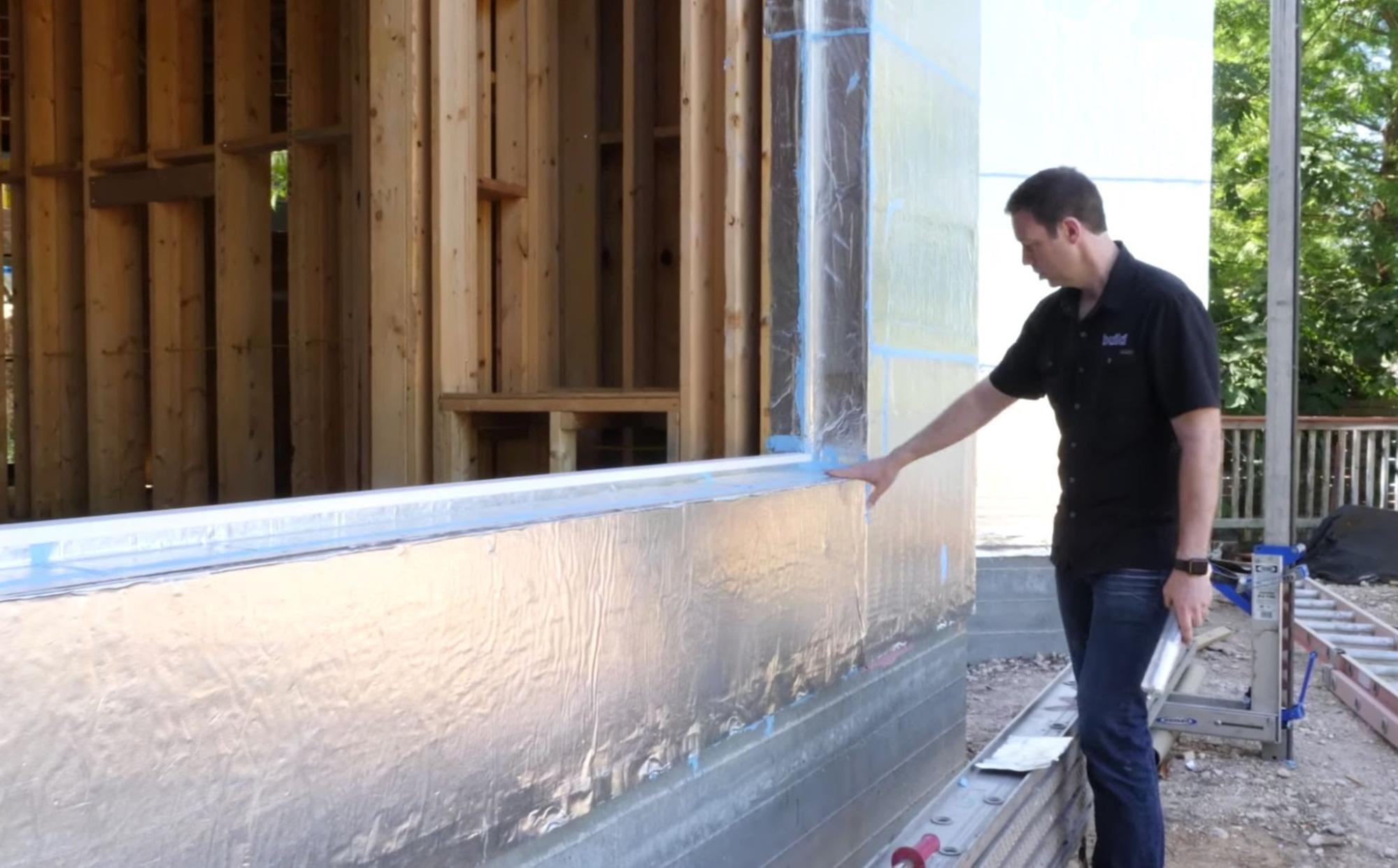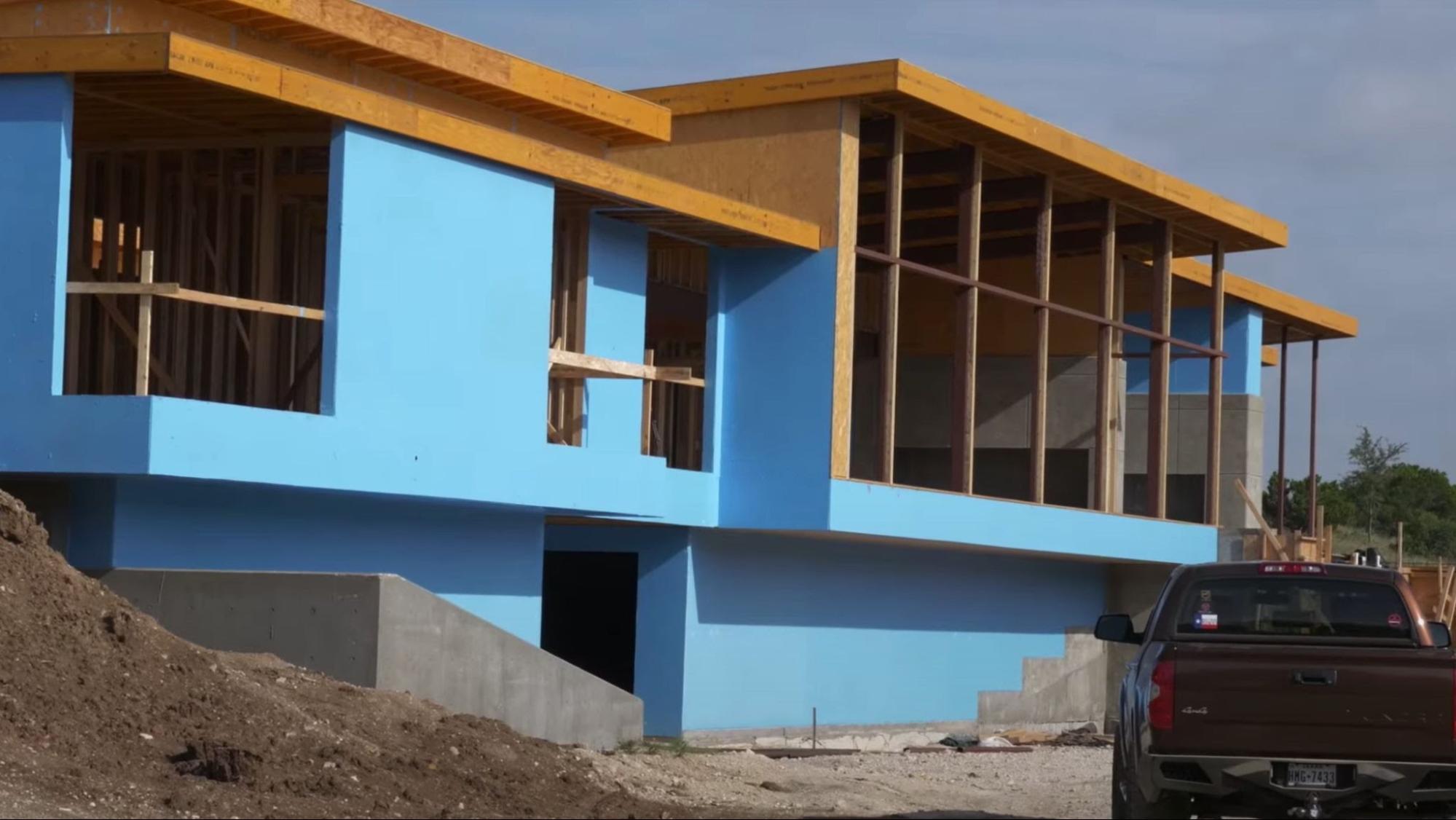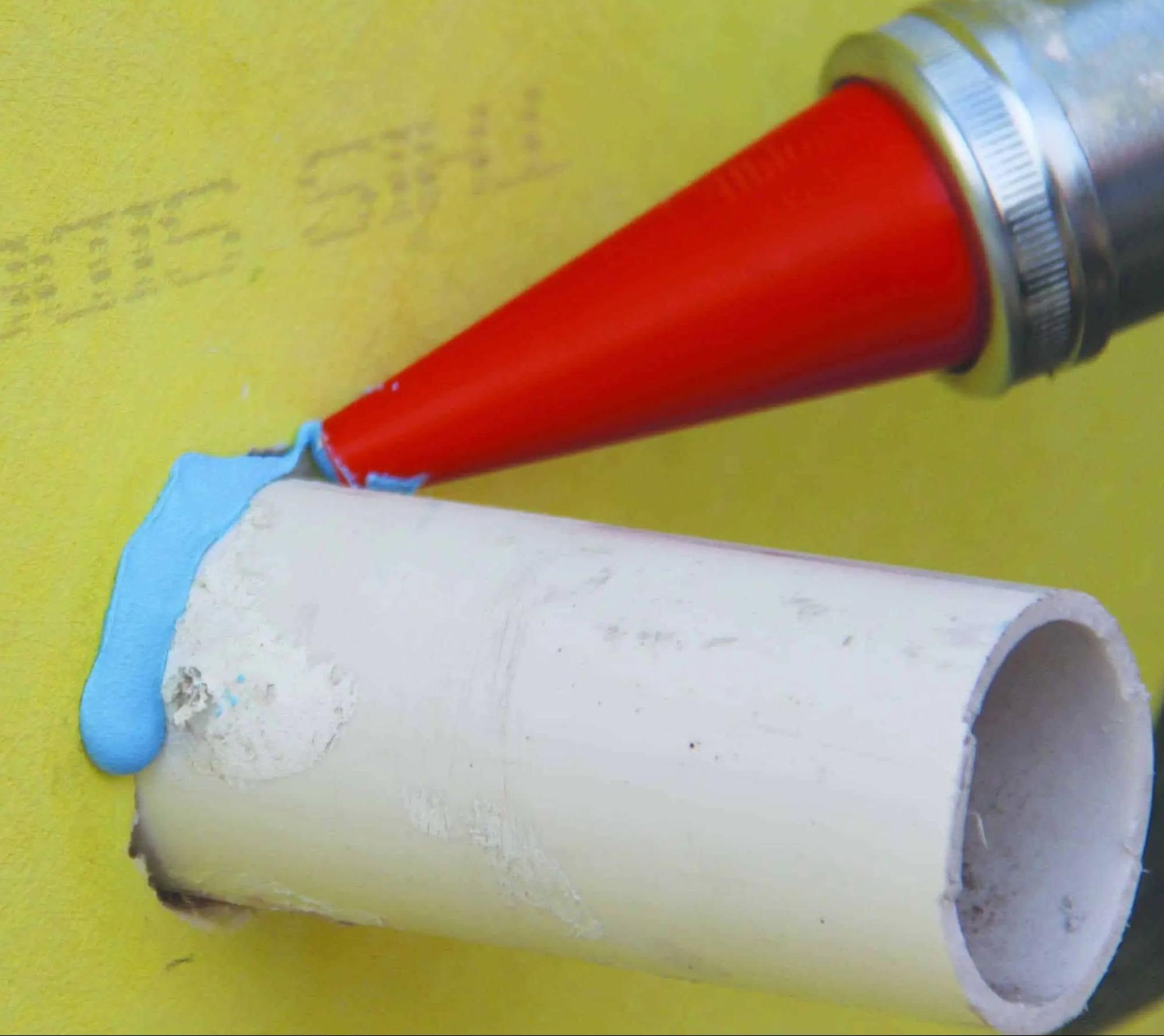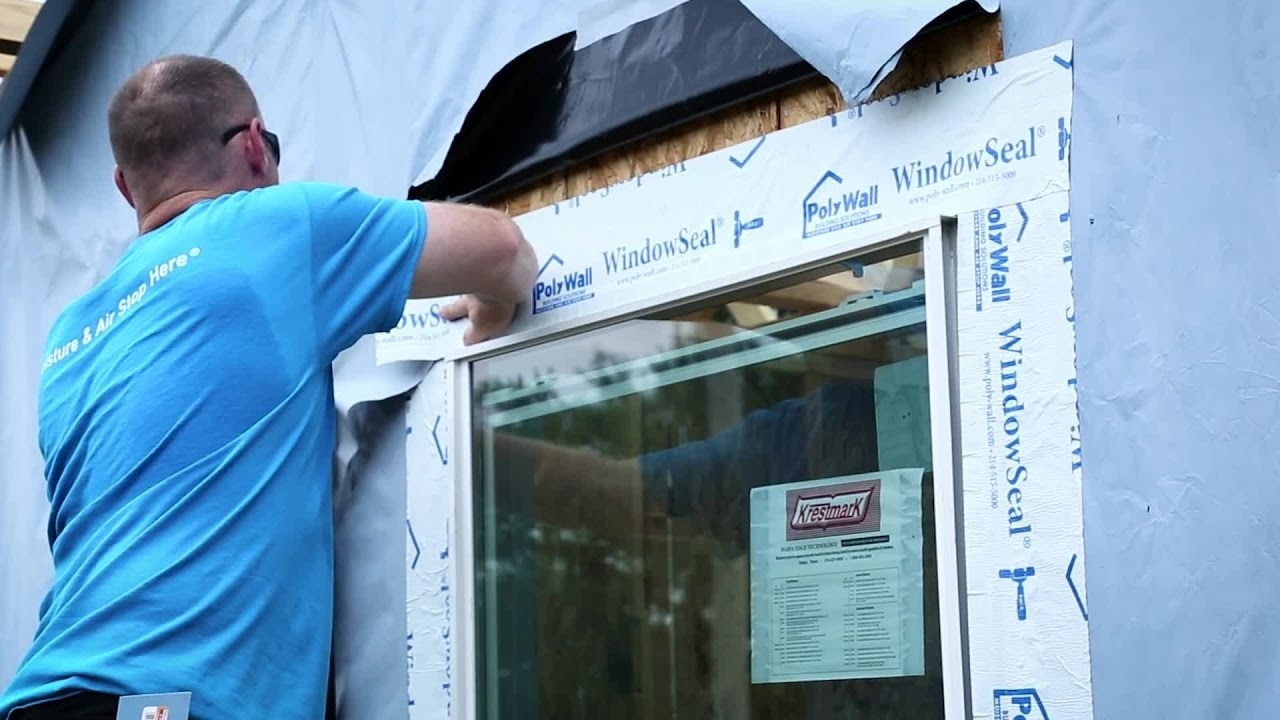Weather barriers have one important job to do: keep outside weather out and conditioned interior air in. A weather-resistant barrier, or WRB construction, is part of the wall and roof assembly. A sturdy weather barrier prevents wind, rain, and moisture from intruding on the structure. The best way to ensure maximum structural weather resistance is to maximize unbroken protection by installing a continuous weather-resistant barrier.
What Is a Weather Barrier?
The only thing worse than bulk water flooding or leaking into a building is the water that is carried in through the air. Weather-resistant barriers are sometimes called WRB barriers, but sometimes it gets misunderstood to mean “water” resistant barriers. Weather-resistant (or sometimes called resistive) barriers prevent air and water from infiltrating the building’s interior. An exterior weather barrier acts like a protective shell on the outside of a building. By keeping building materials dry, the life of the building is extended, indoor air is healthier, and there are fewer moisture-related problems like insects, mold, mildew and rot. Modern, high-quality weather-resistant barriers are robust enough to prevent both air and water from entering a structure.
As part of a healthy wall assembly, the weather-resistant barrier needs to be integrated with the other wall system components, including other barriers, if used, and flashing systems.
Vapor Barriers vs Air Barriers
Both air barriers and vapor barriers help reduce the flow of moisture and unwanted air into a building’s interior.
Vapor barriers slow the diffusion of moisture through wall assemblies. They are intended to prevent the vapor in moisture-laden air from going through a material and reaching building walls, ceilings, attics, crawlspaces, and roofs, where the moisture can condense on surfaces and cause problems like mold. The need for vapor barriers and their placement varies based on climate.
Air barriers restrict the movement of air into and out of buildings. Interior air barriers keep interior conditioned air from escaping while exterior air barriers prevent outside air from entering the structure. Whether internal or external, air barriers should be impermeable and continuous.
A Weather Barrier Must Be Continuous
In order for a weather barrier to do its job properly, it must be continuous over the entire building. Any break in the barrier, such as a puncture, tear, or seam, will create an entry point for water and air to enter the building. To properly install a weather barrier, it must be:
- integrated with flashings and openings
- overlapped with no seams
- properly sealed or taped
Creating a continuous weather-resistant barrier requires a few interconnected products and installation methods.
The main goal of any house wrap product is to prevent water, in bulk form or as vapor, from reaching the sheathing or framing. Wherever there is any break in the structure, such as windows, doors, attached decks, and band joists, that’s an area that needs special attention to detail, because any break provides an entry point for water.
The barrier must be properly lapped and integrated with other flashing. All seams and edges should be sealed with an appropriate tape or sealant. If the system is installed vertically, materials higher on a wall should overlap materials lower on the wall by at least 4 inches. Material should also extend around corners by a minimum of 6 inches.
When you reach window openings, corners, or you need to detail around anything like utility penetrations, use a joint sealer like Poly Wall Blue Barrier Joint Filler 2200. It is a structural adhesive and detail sealant that is used to fill voids and seams and to bond dissimilar materials. Use this product on footer joints and any penetrations into the wall before using Poly Wall Aluma Flash or other barrier products.

Aluma Flash External Weather Barrier
Poly Wall Aluma Flash Plus is an external weather barrier product that protects a house from almost everything. The hot and humid climate zones 1, 2 and 3A (the lower half of the US) receive the highest rainfall, and have also been experiencing more damaging wind and rain events than anywhere in the nation. Builders in these zones must choose products that prevent both bulk water and humid, moisture-laden air from entering structures.
Aluma Flash is non-permeable, which means that bulk water or vapor cannot pass through it — not a single drop. This prevents water from reaching the wall cavity. The product is a 40 millimeter-thick rubberized asphalt sheet membrane that is laminated to two layers of high strength polyethylene film. The top protective layer is aluminum, which protects the walls from UV damage for up to two years. This peel-and-stick membrane releases easily and sticks to a primed substrate.

Poly Wall Weather Barrier System
Using the Poly Wall Blue Barrier 2400 and the Blue Barrier Joint Filler 2200 creates a vapor permeable weather-resistant barrier system that provides protection for the lifetime of the building. Roll it on or spray it on for a thickness that can range from 60 to 80 mils. Use the joint filler to fill in any gaps of 1/8-inch or more, and squeeze it over any openings or flashings. In the home highlighted in the video above, the Blue Barrier system was used after the framing was done. The builders on this high-end home in Texas wanted a unified plane for a stucco coat, so they bumped out the foundation to align with the 1/2-inch OSB that was used. Once that was done, they applied the joint filler to the footing joint, and then set all the sill plates into it.
There’s no adhesive needed with the Blue Barrier 2400 Flash ‘N Wrap, which must be used with a sheet membrane, and because it is fluid-applied, it creates a 100% seal all over. It can be used in any climate.

If you are using a mechanically applied membrane in your WRB construction, it is best to go over nails or staples with Blue Barrier Joint Filler 2200. It seals around nails for a gasketing effect. Without sealing up nail holes, water leakage behind the plane of the nailing flange is possible.

Sealing Window Flashing
Poly Wall WindowSeal Window Flashing Tapes are used to strip in or flash straight window frames, door frames, and other construction seams. WindowSeal is a self-adhering, self-sealing rubberized asphalt coating laminated to polyethylene film. The 20 mil-thick product self-seals to provide a smooth, watertight surface around nails, staples, and fasteners.
Use WindowSeal after the window frame has been set. If the top is rounded or for other custom shaped designs, use Poly Wall ArcFlash Window Flashing. Roll all tape surfaces with a hand roller and that’s it. Tape is usually used to cover seams, but sealant like the Joint Filler is often used to bond dissimilar surfaces, such as when sealing to wood or concrete.
Provide Your Building With Maximum Weather Resistance
Maximize weather resistance in your building with a weather resistive barrier. A weather barrier is a continuous membrane, either mechanically fastened or liquid applied, that prevents bulk water and air-carried moisture from entering a building. The weather-resistant barrier (sometimes called weather-resistive barrier) must be continuous in order to provide complete protection — any break in the surface of the barrier provides a means for water to enter.
Have questions about weather proofing? Get in touch with Polyguard to request samples or advice on creating a continuous weather-resistant barrier for your next project.
